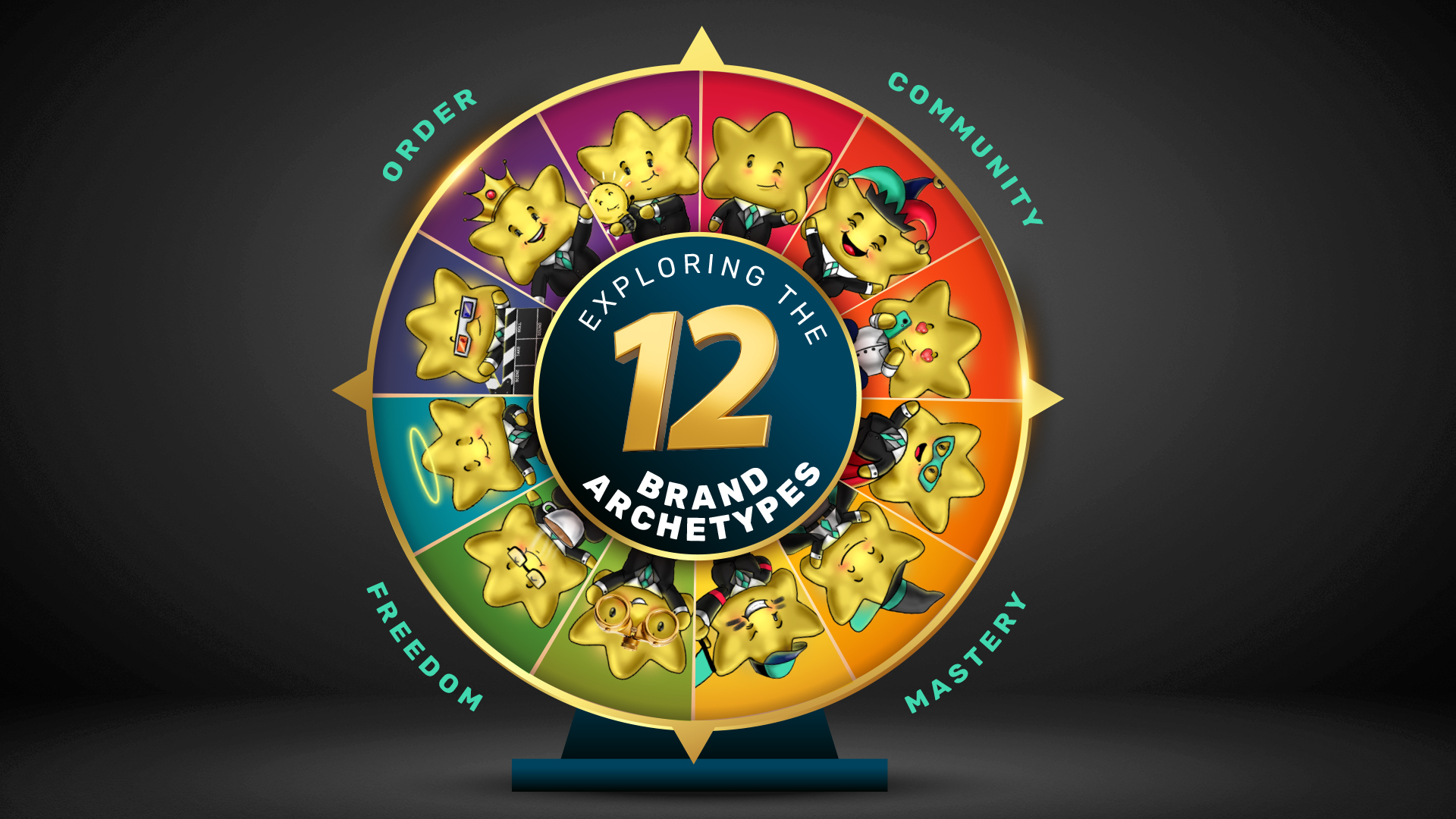
A guide to Build a strong brand identity- 12 archetypes
In the ever-evolving landscape of business, developing a brand identity is crucial. One effective way to achieve this is through the use of brand archetypes. By embodying specific archetypes, brands can tap into universal patterns of behavior and personality that resonate deeply with their audience. This strategic approach not only enhances brand identity but also fosters loyalty and differentiation in a competitive market. The Concept of Brand Archetypes Brand archetypes, rooted in Carl Jung’s theory, are universally recognized characters or symbols that represent key human motivations, values, and traits. There are 12 primary brand personalities, each with distinct characteristics and emotional triggers. These archetypes help brands define their persona and communicate their values in a way that resonates profoundly with consumers. Exploring the 12 Brand Archetypes The Ruler: Brands embodying the Ruler archetype focus on authority, leadership, and control. They emphasize power, responsibility, and tradition, appealing to consumers who seek stability and reliability. Examples include Rolex and Mercedes-Benz. The Caregiver: Compassion, generosity, and nurturing are the hallmarks of the Caregiver archetype. Brands like Johnson & Johnson and Campbell’s Soup promote care and empathy, attracting consumers who prioritize community, family, and social responsibility. The Everyman: Relatability, down-to-earth values, and a sense of belonging define the Everyman archetype. Brands such as IKEA and Levi’s emphasize inclusivity and authenticity, appealing to everyday consumers seeking connection and familiarity. The Jester: Known for humor, joy, and spontaneity, the Jester archetype aims to entertain and create memorable experiences. Brands like M&M’s and Old Spice bring light-heartedness and fun, appealing to consumers looking for excitement and amusement. The Lover: Intimacy, passion, and sensory pleasure are central to the Lover archetype. Brands such as Chanel and Victoria’s Secret evoke desire and emotional engagement, attracting consumers seeking romance, luxury, and indulgence. The Hero: Bravery, resilience, and the pursuit of greatness are the essence of the Hero archetype. Nike and Adidas inspire and empower customers to overcome challenges and achieve their goals, appealing to those who admire strength and determination. The Magician: Transformation, vision, and imagination define the Magician archetype. Brands like Disney and Apple promise to make dreams come true and offer innovative solutions, appealing to consumers looking for creativity and wonder. The Rebel: Non-conformity, revolution, and challenging the status quo are key traits of the Rebel archetype. Harley-Davidson and Diesel advocate for change and authenticity, attracting consumers who value independence and breaking boundaries. The Explorer: Discovery, independence, and adventure characterize the Explorer archetype. Brands like The North Face and Jeep encourage exploration and self-discovery, appealing to consumers seeking new experiences and personal growth. The Sage: Wisdom, knowledge, and understanding are central to the Sage archetype. Google and Harvard University aim to educate and provide thoughtful insights, appealing to consumers who value expertise and intellectual pursuits. The Innocent: Simplicity, purity, and optimism define the Innocent archetype. Brands like Dove and Coca-Cola evoke nostalgia, trust, and a sense of goodness, attracting consumers seeking safety and happiness. The Creator: Innovation, individuality, and self-expression are the hallmarks of the Creator archetype. For example, brands like Lego and Adobe inspire creativity and encourage personal growth. Consequently, they appeal to consumers who value originality and craftsmanship. The Importance of Utilising Brand Archetypes Creating Emotional Appeal Firstly, each archetype taps into deep-seated human emotions and desires. Consequently, this allows brands to connect with consumers on a profound level. Moreover, this emotional resonance can lead to stronger brand loyalty and affinity. Consistent Brand Messaging Additionally, archetypes provide a clear framework for defining and communicating a brand’s personality, values, and mission. Thus, this consistency helps establish a coherent brand identity across different marketing channels. Differentiation in the Market Furthermore, in a crowded marketplace, archetypes help brands stand out by emphasizing unique characteristics and values. Therefore, this differentiation is essential for attracting and retaining customers amidst competition. Conclusion Understanding and leveraging brand archetypes is a powerful tool. Therefore, it helps in creating meaningful connections, establishing a distinctive identity, and navigating the complexities of modern marketing. By embodying specific archetypes, brands can resonate deeply with their audience. Consequently, this fosters loyalty and helps them stand out in a crowded marketplace. For instance, consider the simplicity of the Innocent, the adventure of the Explorer, or the wisdom of the Sage. Each archetype offers unique opportunities for brands. Thus, they can connect with consumers and, consequently, build lasting relationships.









